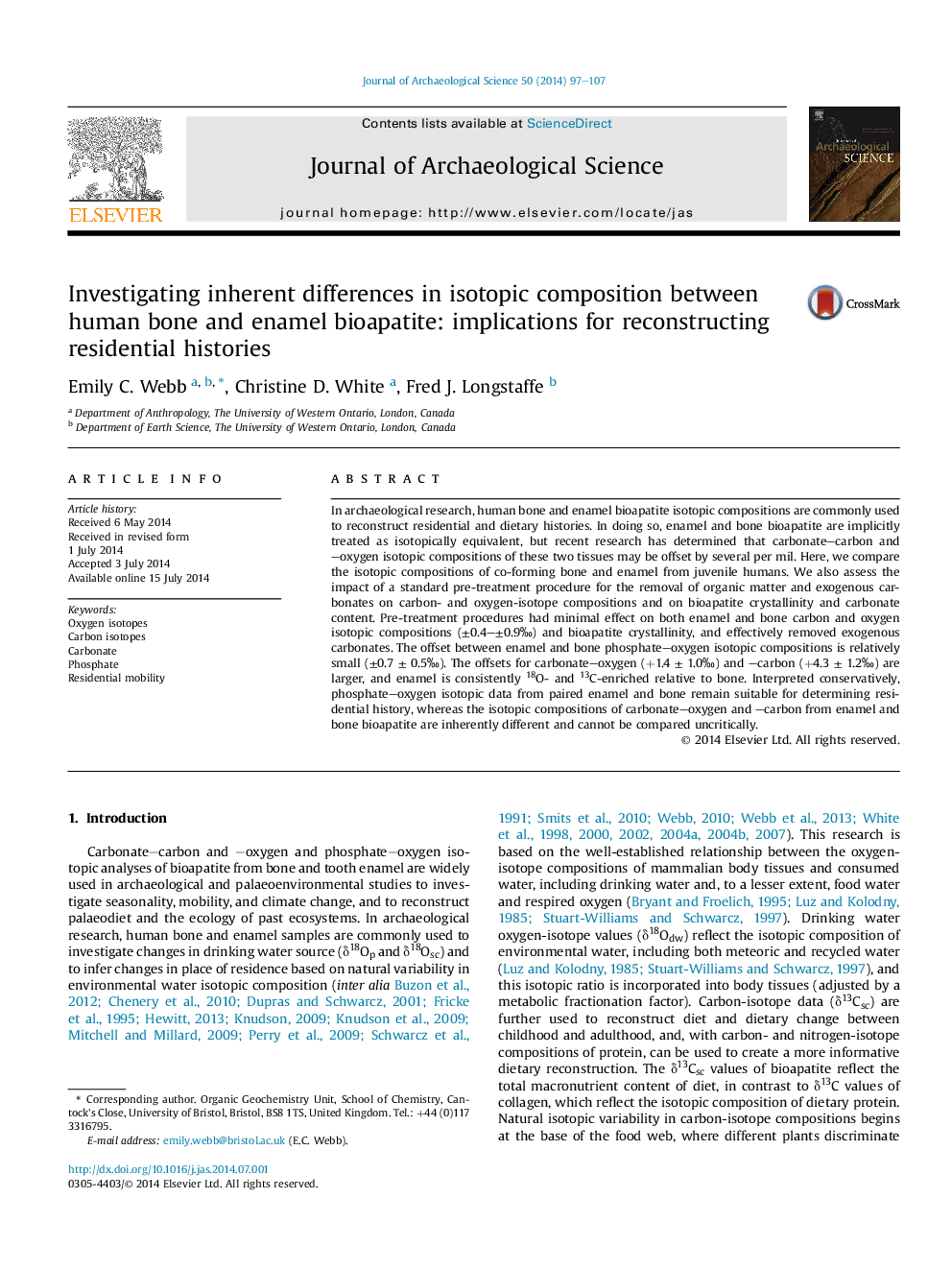| Article ID | Journal | Published Year | Pages | File Type |
|---|---|---|---|---|
| 7442857 | Journal of Archaeological Science | 2014 | 11 Pages |
Abstract
In archaeological research, human bone and enamel bioapatite isotopic compositions are commonly used to reconstruct residential and dietary histories. In doing so, enamel and bone bioapatite are implicitly treated as isotopically equivalent, but recent research has determined that carbonate-carbon and -oxygen isotopic compositions of these two tissues may be offset by several per mil. Here, we compare the isotopic compositions of co-forming bone and enamel from juvenile humans. We also assess the impact of a standard pre-treatment procedure for the removal of organic matter and exogenous carbonates on carbon- and oxygen-isotope compositions and on bioapatite crystallinity and carbonate content. Pre-treatment procedures had minimal effect on both enamel and bone carbon and oxygen isotopic compositions (±0.4-±0.9â°) and bioapatite crystallinity, and effectively removed exogenous carbonates. The offset between enamel and bone phosphate-oxygen isotopic compositions is relatively small (±0.7 ± 0.5â°). The offsets for carbonate-oxygen (+1.4 ± 1.0â°) and -carbon (+4.3 ± 1.2â°) are larger, and enamel is consistently 18O- and 13C-enriched relative to bone. Interpreted conservatively, phosphate-oxygen isotopic data from paired enamel and bone remain suitable for determining residential history, whereas the isotopic compositions of carbonate-oxygen and -carbon from enamel and bone bioapatite are inherently different and cannot be compared uncritically.
Related Topics
Physical Sciences and Engineering
Materials Science
Materials Science (General)
Authors
Emily C. Webb, Christine D. White, Fred J. Longstaffe,
